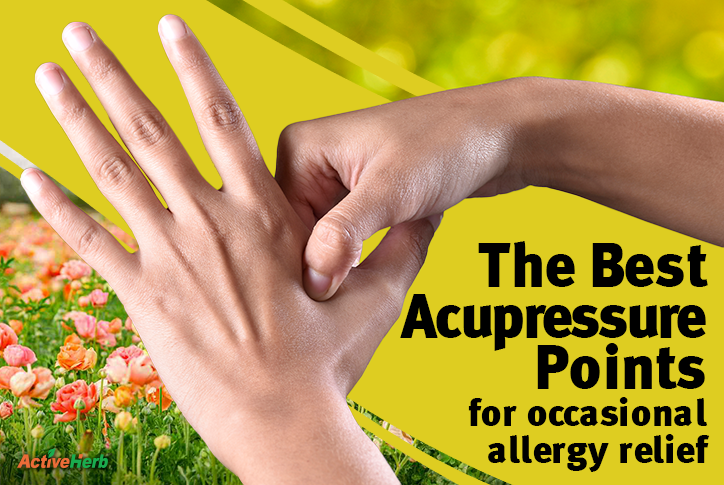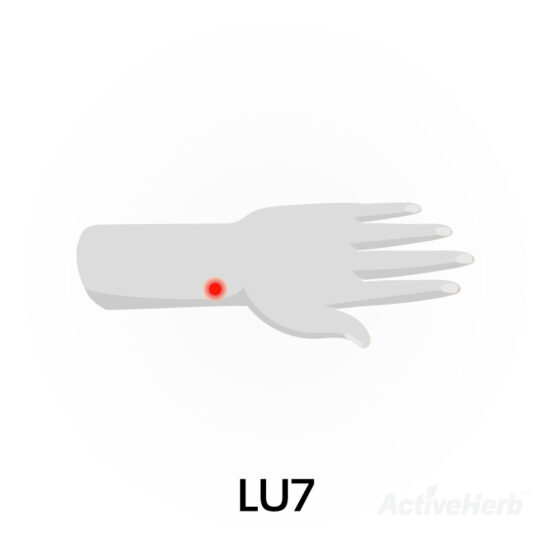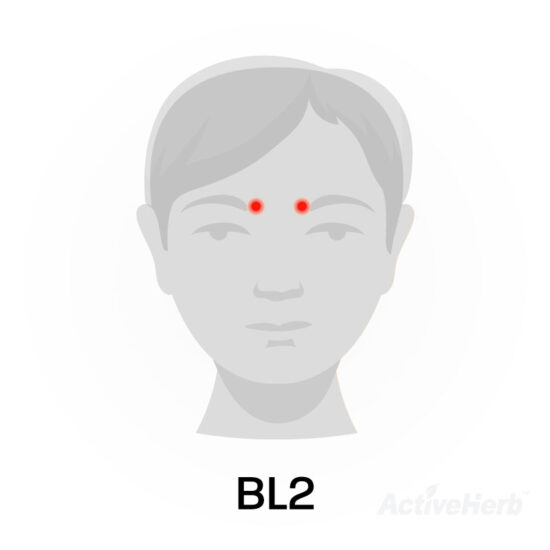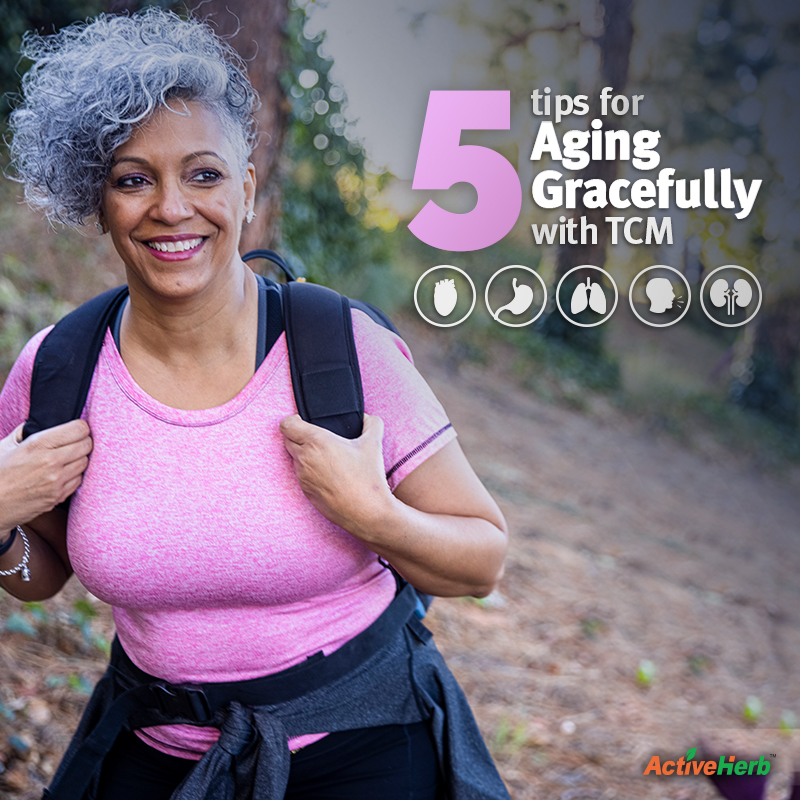The Best Acupressure Points For Occasional Allergy Relief

For some people who relocated to San Diego—home of ActiveHerb.com headquarters—because of its perfect Mediterranean climate, they want their money back! The 2022-2023 winter was an unusually rainy and frigid one, with even a light dusting of snow near the beaches!
Now that the longer days of Spring have finally arrived, a wildflower super bloom is on full display. But all that pollen is going to make lots of people miserable. If occasional seasonal allergies prevent you from running through a field of flowers with joy, there’s one simple thing that may help: acupressure.
Find out what are the 7 best acupressure points. It’s an easy and fast solution you can do while listening to music or even watching TV.
How To Naturally Prevent Allergy Symptoms
In a perfect world, your immune system has perfect Yin/Yang balance. And starting in February, you would go get at least a couple acupuncture treatments to prevent allergy symptoms. In addition, a couple weeks before the arrival of Spring, you’d start taking Te Xiao Bi Min Gan Pian, one of the most time-tested Traditional Chinese Medicine (TCM) herbal formulas for sinus support.
Of course, life’s not perfect. February flies by and because it’s so cold out, Spring seems like months away. Thus, you neglect to take action before your nose erupts like Old Faithful.
What then is the next best thing? Give yourself an acupressure massage. Acupressure isn’t as luxurious as receiving a massage at a 5-star spa. But massaging certain acupressure points on your body is not only relaxing, research suggests it’s effective for relieving occasional seasonal allergy symptoms.
In fact, the results of a 2021 exploratory study published in Chinese Medicine indicated that “self-applied acupressure is feasible, may improve … quality of life and reduce … symptoms as well as anti-allergic medication” in patients with seasonal allergic rhinitis.
More research is needed to draw definitive conclusions about acupressure for seasonal allergy symptoms. However, acupressure is a 4,000 year old discipline that continues to be more accepted in Western medicine.
What Are Acupressure Points?
You know how when you press on a certain area of the body, you can feel it in a totally different part of the body? That certain area that elicits a feeling in a distal region is an acupuncture point. You can think of acupressure points as mini-power substations of energy. In TCM theory, acupressure points are conduits of Qi (the body’s energetic flow). Acupressure points are located on energetic pathways called meridians or channels, that are like superhighways for Qi.
Stimulating acupressure points promotes greater Yin/Yang balance. Consequently, pain sensation lowers, greater relaxation sets in, and the body’s organs are working more efficiently.
Out of the hundreds of acupressure points on the body, acupuncturists memorize hundreds of pressure points. But for the “Springtime Blues,” all you have to do is learn a handful of points.
Before we explore the best acupressure points for occasional allergy symptom relief, a couple quick notes on how to apply pressure. The pressure should be firm but not painful. Aim to apply pressure on each point for 1-3 minutes. We’ll highlight 7 points, so in the time it takes to watch your favorite sitcom, you can try all of them.
For best results, use your pointer or middle finger to apply pressure. Certain points like the webbing in between your thumb and pointer finger require using your thumb. Most notably, this includes Large Intestine 4, the first point we’ll review…
Best Acupoints For Occasional Springtime Allergy Symptoms

- Large Intestine 4 (LI4): LI4 is known as the Great Eliminator because it eliminates external invaders that cause allergy-like symptoms. In TCM theory, the biggest culprit of runny noses is Wind. LI4 releases the exterior. This means it gets rid of Wind from inside the body. This acupressure point also assists the Lungs to disperse any problematic invaders. In Chinese, LI4 is called Hegu, which roughly means Converging Valley, a reference to the point’s location on the back of the hand, in the webbing between the thumb and pointer finger. Try LI4 to unblock sinuses, relieve pressure in the head, and for itchy eyes.

- Large Intestine 20 (LI20): A fitting name for an acupressure point for someone who wants to smell the flowers, LI20 is “Yingxiang” or Welcome Fragrance. Like LI4, it dispels Wind to alleviate sinuses. It also clears another external invader: Heat. Located on both sides of the nostrils, at the bottom of the cheekbones, use this point for runny noses and sinus pressure.

- Lung 7 (LU7): Known as “Lieque”, aka Broken Sequence, you’ll find LU7 a couple of fingers away from your wrist. A primary point for eliminating Wind (from both Cold and Wind types), LU7 is on the same line that connects your thumb and index finger to the elbow. Acupressure on LU7 may help with coughing, wheezing, and chest congestion.

- Governing Vessel 23 (GV23): Pressing down directly on your head may seem strange if you’ve never had that done. But anybody who has received a scalp massage knows the sublime feeling. And pressing on Shangxing (The Upper Star), which is located just above the hairline in the middle of the scalp may bring relief of plugged-up sinuses and red, itchy eyes.

- Large Intestine 11 (LI11): It’s the “Pool at the Crook” where we find LI11 or Quchi. The name refers to the point just outside of the elbow at the crease where the arm bends. Acupuncturists use this point to resolve Dampness, yet another evil of TCM that causes energy blockages. LI11 also clears the other usual cast of pathogenic characters, including Wind-Heat. Try this point if you’re feeling itchy, can’t stop sneezing or blowing your nose.


- Stomach 2 (ST2): The point that goes by “Four Whites On the Face” or Sibai, is about 2 finger widths directly below the eye. This point may provide comfort if your eyes are itchy and red.
- Urinary Bladder 2 (BL2): The point, Zan Zhu or “Bamboo Gathering” is located at the tip of both eyebrows, along the inner eye area. Apply pressure to UB2 for clogged sinuses and itchy, watery eyes.
Conclusion
Hopefully these acupressure points will help you be able to stop and smell the flowers. And also save money on tissues. In all seriousness, acupressure may work well. But if budget allows, it’s better to visit an acupuncturist. After all, they are the acupressure point experts.
Don’t forget to stock up on Te Xiao Bi Min Gan (AllerPeace) to give you peace of mind this Spring!
Finally, it should also go without saying that if you are experiencing severe symptoms such as difficulty breathing, seek immediate medical attention.
Have you ever tried acupressure on yourself? Did it work? Tell us about your experience.
Recommended Reading From The ActiveHerb.com Blog:








